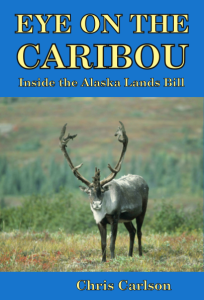

John Freemuth is Professor of Public Policy and Executive Director of the Andrus Center for Public Policy at Boise State University. His primary academic interest is with the public lands of the United States. Currently his work gravitates towards puzzling out the relationship between science and public policy as it relates to issues surrounding the public lands. He wrote “Thoughts on the Role of Science in Public Policy Making” in Ecology and Conservation of Greater Sage-Grouse: A Landscape Species and Its Habitats (University of California Press, 2011). He just published his and Zachary Smith’s Environmental Politics and Policy in the West (UC Boulder). He chaired the Science Advisory Board of the Bureau of Land Management, after being appointed by Interior Secretary Bruce Babbitt. He was the Senior Fellow at the Cecil Andrus Center for Public Policy from 1998-2011, becoming Executive Director of the Center in July, 2016.

The passage of the Alaska National Interest Lands Conservation Act (ANILCA) in 1980 was perhaps the greatest single act of conservation/preservation policymaking in American history. This act authorized 10 national parks and preserves, two national monuments, nine national wildlife refuges, two national conservation areas, 25 wild and scenic rivers, as well as expanded existing national parks and added millions of acres of wilderness. ANILCA also enlarged a number of other existing parks and protected over 100 million acres in all.
As many know, the role of former Idaho governor and then-Interior Secretary Cecil Andrus in advising President Jimmy Carter’s use of the Antiquities Act in 1978, helped force resolution of the Alaska conservation issue.
One of the key people involved in the Alaska fight was Chris Carlson of Medimont, Idaho, then-press secretary to Secretary Andrus. Carlson has written a new book, Eye on the Caribou (Ridenbaugh Press, 2015), that provides a fascinating insider’s account of the events, issues and personalities leading up to and occurring during this seminal time in American conservation.
As one example, Alaska’s senators at the time were often adversaries of conservation. One, the legendary Ted Stevens, “Uncle Ted” to Alaskans, fought hard but always kept his word, while the other, Mike Gravel, Carlson reveals, outright lied to Andrus. Gravel’s actions, including threatening a filibuster, had grave consequences according to Carlson’s account, and led in part to Carter’s ultimate use of the Antiquities Act.
Andrus and Carter had, in part, hatched the Antiquities Act strategy during their famous float of the Middle fork of the Salmon River in 1978, as they had anticipated Gravel’s duplicity. Furthermore, Gravel’s various deceits, in 1978, caused Stevens to change his travel plans to try and salvage a strategy with the key opposition group, Citizens for the Management of Alaska Lands. The change in plan ended with an airplane accident that killed Stevens’ wife. Carlson notes that Stevens never forgave Gravel, held him responsible and helped engineer his re-election defeat in 1980. (Stevens later died in a plane crash as well.)
In another example, Carlson recounts a plane trip and Alaska tour that Secretary Andrus, a Democrat, and then-Governor Jay Hammond, a Republican, took together. It was just the two of them on the trip, Hammond the pilot and Andrus the passenger. This is the sort of bipartisan personal politics we are so lacking in the U.S. today and this story alone makes the book worth the read, because most people are as yet unaware that it even occurred.
A good deal of the book is spent on the story of Wallace McGregor and his battle with the National Park Service over a mining interest impacted by the Alaska Lands Act. Carlson takes a sympathetic view of McGregor, but is fair to the difficulties faced by the Park Service as it took over the administration of its new lands. As Carlson puts it, “for every well-intended law passed by a legislative body, inevitably there is an unintended consequence that causes great harm.” This is an axiom worth remembering.
This book adds to the story of that great act of Alaska conservation because it reveals events, personalities and details that only someone in the middle of the story would know. As Brock Evans, one of Carlson’s “four horsemen” of the Alaska story (Andrus, Chuck Clusen and Doug Scott being the other three), put it this way in a press release for the book: “It is such a good book; perhaps THE single book to read, if a person really wants to grasp the WHOLE context, the whole political and personality setting behind this most amazing piece of legislation… Carlson featured ALL the players, in one way or another. Very few books on these subjects by ‘environmentalists’ ever have that. Because they didn’t really know ALL the players.”
Eye on the Caribou complements Frank Willis’ Do Things Right the First Time: The National Park Service and the Alaska National Interest Lands Conservation Act of 1980 (link to NPS website), a superb National Park Service administrative history.
My only criticism of the book is that it could have used better editing. Several times words appear crossed out, and events are discussed similarly more than once. I’m told the second edition will clean this up. That said, if one wants a firm understanding of how policy making actually happens and gets resolved, stories such as those in this book can help a great deal with that understanding.